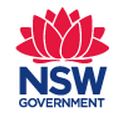Government of New South Wales: Difference between revisions
No edit summary |
No edit summary |
||
| Line 21: | Line 21: | ||
| linkedin = | | linkedin = | ||
| twitter = | | twitter = | ||
| keypeople = Professor [[Marie Bashir]], Governor <br> [[Barry O'Farrell]], Premier | | keypeople = Professor [[Marie Bashir]], Governor <br> [[Barry Robert O'Farrell]], Premier | ||
}} | }} | ||
The '''Government of New South Wales''' has a parliamentary system and it is one part of the Commonwealth of Australia. The government is based on the United Kingdom's Westminster system wherein there is a separation power between the Executive, Legislative and Judiciary as set forth by the Constitution Act of 1902. The Executive branch is responsible in administering and implementing government policies. It is composed of the Premier and the Ministers of the Cabinet | The '''Government of New South Wales''' has a parliamentary system and it is one part of the Commonwealth of Australia. The government is based on the United Kingdom's Westminster system wherein there is a separation power between the Executive, Legislative and Judiciary as set forth by the Constitution Act of 1902.<ref>[http://www.parliament.nsw.gov.au/Prod/parlment/publications.nsf/key/IS08/$File/Govt+in+NSW.pdf Government in New South Wales]</ref> | ||
The Executive branch is responsible in administering and implementing government policies. It is composed of the Premier and the Ministers of the Cabinet. The governor of NSW was given by its constitution the power to appoint Ministers, Judges, Commissioners and Justices of the Peace to form the government. Generally, the governors appoints the Premier, the leader of the majority party of the Legislative Assembly to form the government. <ref>[http://www.parliament.nsw.gov.au/prod/web/common.nsf/key/ExecutiveGovernment The Executive Government]</ref> The current governor of NSW is Professor [[Marie Bashir]]. She is the first woman appointed to serve as governor of the state. As governor, she has the power to preside over the Executive Council, which is composed of Ministers and the supreme executive authority of the state. <ref>[http://www.parliament.nsw.gov.au/prod/web/common.nsf/key/ResourcesSystemTheGovernorofNewSouthWales The Governor of NSW]</ref> | |||
The Parliament is comprise of the Legislative Council (Upper House) and Legislative Assembly (Lower House). The members of the Parliament are elected by the people who represent their interest and scrutinize the policies of the Executive branch. The Premier is the chief minister and serves as senior representative and spokesperson of the government. Barry Robert O'Farrell is the current Premier and Minister of Western Sydney. <ref>[http://www.parliament.nsw.gov.au/prod/parlment/members.nsf/0/275291281FA0F28E4A2567450001658A Parliament of New South Wales]</ref> | |||
The Judiciary is made up of independent judges who are appointed by the executive government to the court systems. The NSW Supreme Court is the highest court in the state. The judges can only be removed from their positions through a parliamentary process. <ref>[http://www.parliament.nsw.gov.au/Prod/parlment/publications.nsf/key/IS08/$File/Govt+in+NSW.pdf Government in New South Wales]</ref> | |||
==References== | ==References== | ||
Revision as of 18:32, 11 June 2012
 | |
| Type: | Government Entity |
| Founded: | 1855 |
| Headquarters: | Parliament House
6 Macquarie Street, Sydney, NSW 2000 |
| Country: | Australia |
| Website: | www.nsw.gov.au |
| Key People | |
| Professor Marie Bashir, Governor Barry Robert O'Farrell, Premier | |
The Government of New South Wales has a parliamentary system and it is one part of the Commonwealth of Australia. The government is based on the United Kingdom's Westminster system wherein there is a separation power between the Executive, Legislative and Judiciary as set forth by the Constitution Act of 1902.[1]
The Executive branch is responsible in administering and implementing government policies. It is composed of the Premier and the Ministers of the Cabinet. The governor of NSW was given by its constitution the power to appoint Ministers, Judges, Commissioners and Justices of the Peace to form the government. Generally, the governors appoints the Premier, the leader of the majority party of the Legislative Assembly to form the government. [2] The current governor of NSW is Professor Marie Bashir. She is the first woman appointed to serve as governor of the state. As governor, she has the power to preside over the Executive Council, which is composed of Ministers and the supreme executive authority of the state. [3]
The Parliament is comprise of the Legislative Council (Upper House) and Legislative Assembly (Lower House). The members of the Parliament are elected by the people who represent their interest and scrutinize the policies of the Executive branch. The Premier is the chief minister and serves as senior representative and spokesperson of the government. Barry Robert O'Farrell is the current Premier and Minister of Western Sydney. [4]
The Judiciary is made up of independent judges who are appointed by the executive government to the court systems. The NSW Supreme Court is the highest court in the state. The judges can only be removed from their positions through a parliamentary process. [5]

